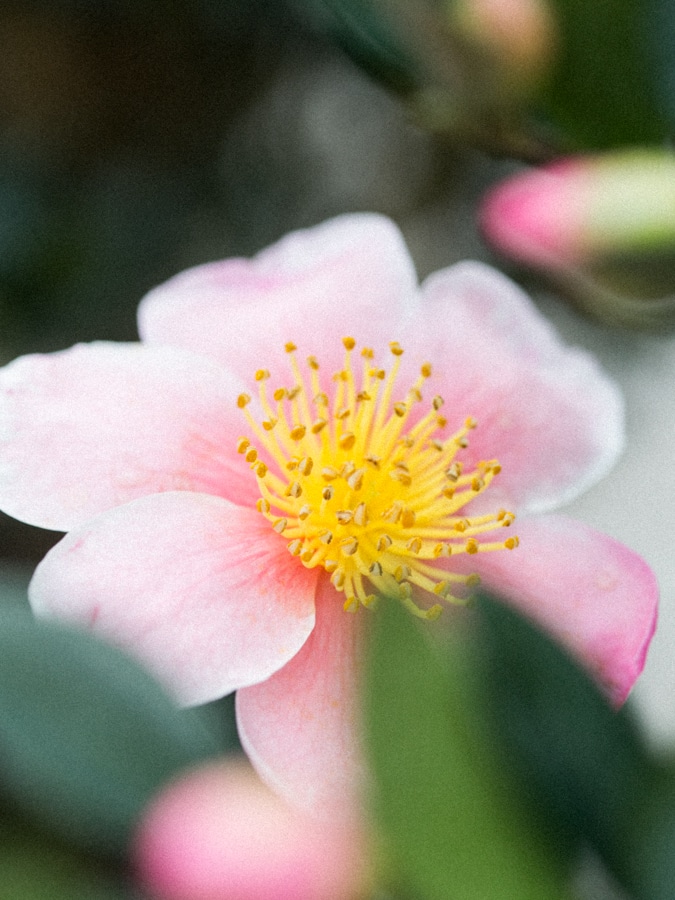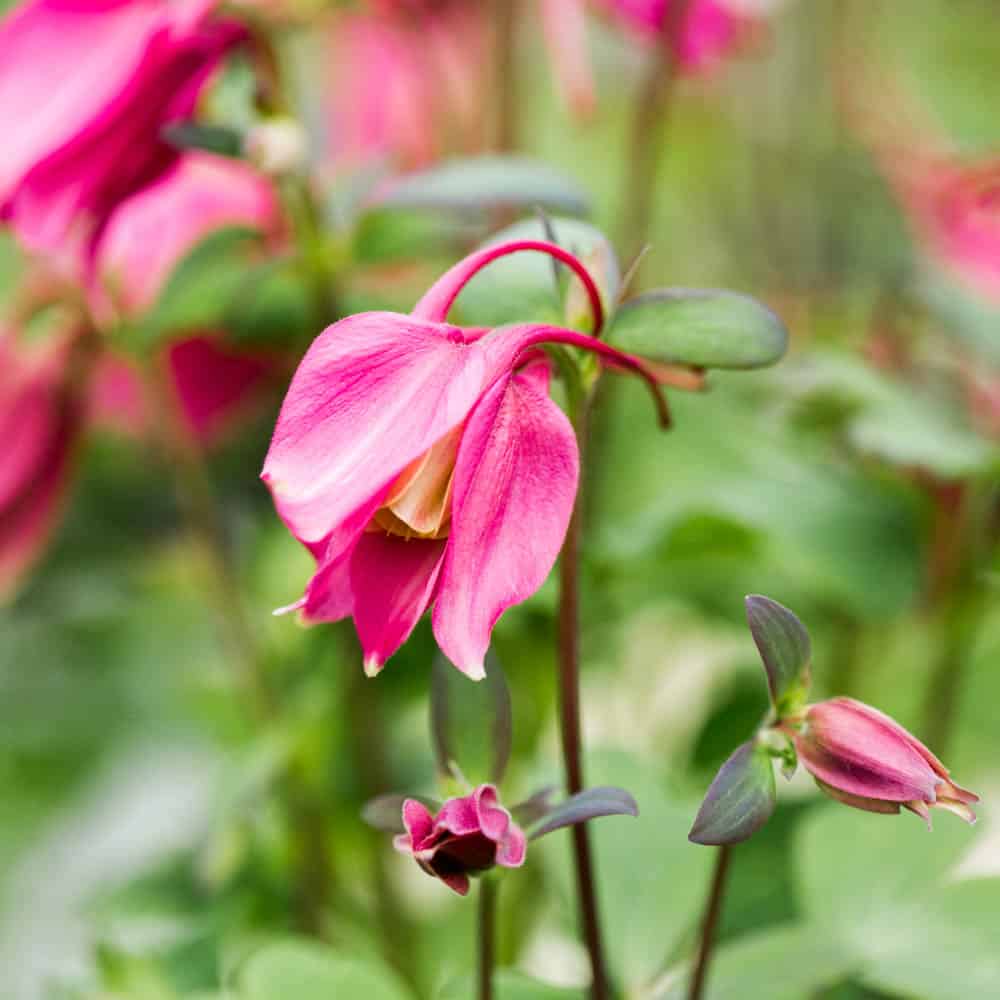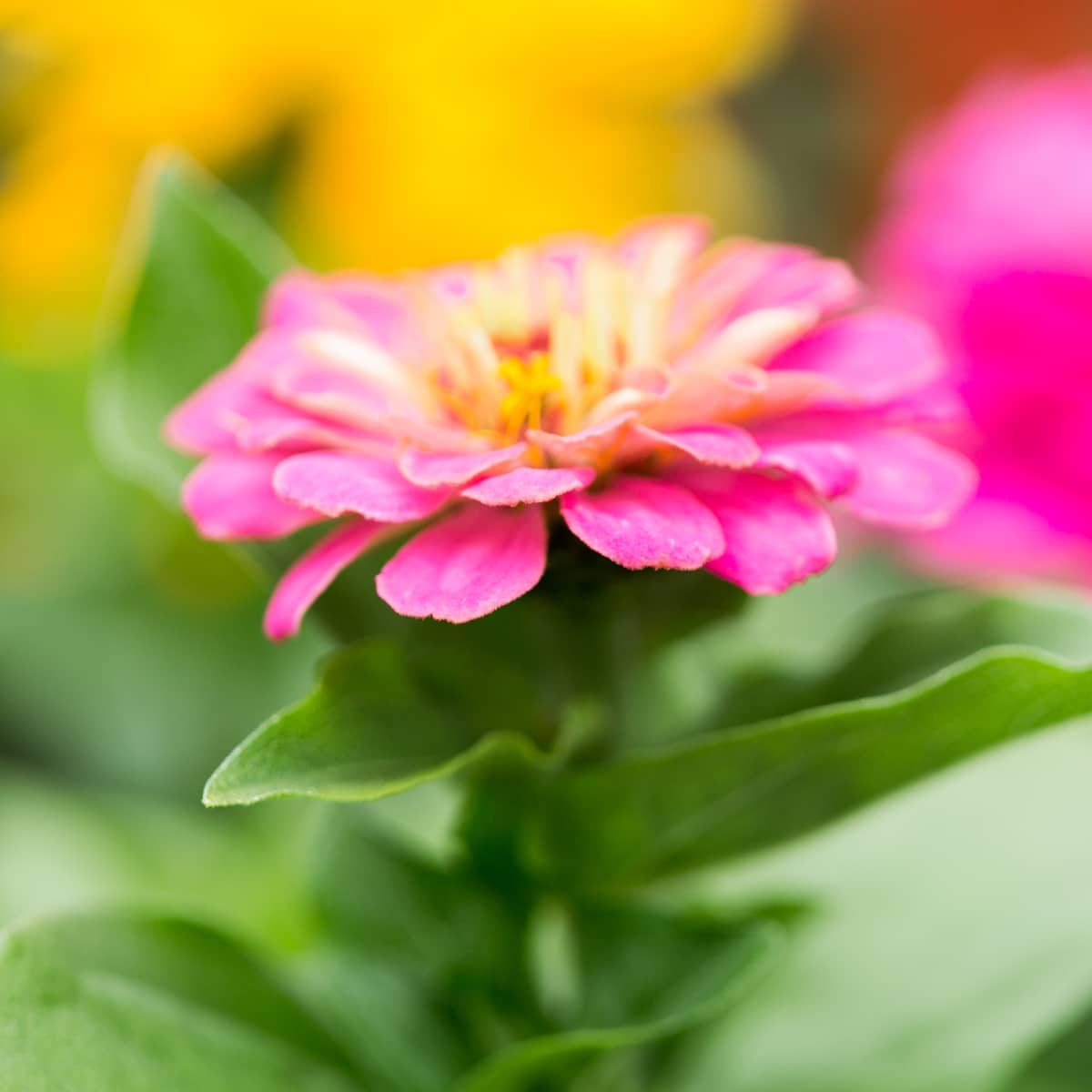How To Plant A Camellia For Showy Winter Flowers
Join us as we learn how to plant a camellia today!
Romantic and showy, camellia are flowering evergreen shrubs that bloom in late fall and early winter. Their bright flower buds grace the landscape when winter colors are monotonous and dreary.
The billowy buds of camellias come in many colors and these large shrubs keep a glossy sheen to their green leaves all year. Learn how to plant flowering camellias and enjoy their water color like blooms during the winter months!

How To Plant A Camellia
To plant camellia choose a partial shade location that has well-drained, acidic soil. The planting hole should be twice the size of the root ball and amended with organic matter if needed.
Camellia like to be planted slightly higher than the ground, so make sure the top of the root ball is several inches above the soil. Create a slope of dirt up to the base of the camellia plant so that water drains downward in a gentle slope.
Continue reading for all the details.

Types Of Camellias + Planting
Before planting, check the type of camellia shrub you are so lucky to have acquired. While all camellia need some shade, some varieties are more sun tolerant than others.
There are two main types of camellia shrubs: Japanese camellias (c.japonica) and sasanqua camellia.
Japanese camellia: These traditional winter blooming camellia with glossy leaves and circular, compact blooms are the most well known variety. Also known as common camellia, they can grow up to 12 feet tall and have thick glossy leaves. The blooms are compact bursts of color which spiral outwards with many petals.
Sometimes referred to as c. japaonica in the United States, these camellia require part shade conditions to thrive. Depending on location, bloom time can range from mid December to early March.

Sasanqua camellia: Sasanqua camellia unfurl in early fall to mid winter with delicate, prolific, fragrant blooms. The showy flowers are smaller in size than Japanese camellia, and this variety is more sun tolerant.
There are over 250 different camellia species. Most grown in the United States are either Japanese camellia, Sasanqua, or a hybrid of both.
Knowing what kind of camellia you have can aid you in your planting journey. Sasanqua varieties will be more tolerant of sunlight, while Japonica are firm lovers of afternoon shade or dappled shade.

About Camellias
Camellias are a romantic flowering shrub with glossy evergreen foliage that bloom in colder temperatures. They bloom from late fall to mid spring and add wonderful color and variety to the winter landscape.
This gorgeous winter bloomer is native to Asia. There are thousands of varieties of common camellia, with a vast variety of colors and petal shapes. Camellia thrive with afternoon shade and plenty of water, but need well draining, acidic soil as well as good air circulation to prevent disease.

Camellia are billowy, poetic flowers that look lovely in cottage style gardens.
Growing Zones
Camellias thrive in moderate temperatures and enjoy living in US zones 7-10. We have personally grown camellia in Oregon, Idaho and Washington. Check your growing zone here.
Soil Type
Proper soil conditions are important for camellia. They need well draining soil that has an acidic pH level.
Camellia are acid-loving plants, and the soil should be between 5.5 and 6.5 pH. You can test your soil pH with a soil test kit like this one. Adding soil amendment in the form of organic matter, acidic fertilizer and peat moss can help lower the pH level towards lower acidity.
Well-draining soil is essential for camellias and will prevent root rot and fungal diseases.
Peat moss can be added to the soil to help both with drainage and increasing acidity.
The Best Time To Plant Camellia
Plant camellia in fall or early spring when the weather is moderate and there is plenty of rain.
When planting in fall, make sure to plan several weeks before the first frost date so the shrub has time to establish it’s roots before freezing temperatures set in.
Avoid planting camellia in the heat of the summer or during the cold frosts of winter.
Light: Choosing The Best Planting Site
The best planting area for a camellia receives early morning sun and is partly shaded in the afternoon. Look for shelter from the harsher afternoon sunlight by planting near the side of a house or beneath the canopy of trees.
Young camellias are especially susceptible to harsh heat and sunlight.
Avoid locations that have hot afternoon sun as this can burn the plant’s leaves and flowers. Full sun in the morning and afternoon shade can be an ideal location. Locations with dappled sunlight also work well.
Keep in mind that while camellia love shade, they need at least 4 to 6 hours of sunlight or dappled sunlight in order to properly form flowers. This is why morning sunlight is often ideal!
Consider sheltering a camellia shrub in the northern exposure of the home.
While planting under a canopy of other established trees can be beneficial for shade, make sure that the camellia has plenty of soil to grow and develop a healthy root system. Large tree roots may take up too much of the soil.

How To Plant Camellia In The Ground (Steps)
Once you have determined the soil conditions and sun to shade ratio is correct, it’s time to plant your camellia. Here’s how:
- Dig a hole twice as large as the plant’s container.
- After removing the camellia shrub from it’s pot, loosen the roots, especially if the plant looks pot bound. You can tell the plant is root bound when the roots are wrapped circularly around each other and are no longer able to stretch out and reach for nutrients. To break up the roots take a sharp blade and cut the roots about half inch deep. Use hands to gently pull apart and loosen the roots.
- Add two large handfuls of bone meal to the bottom of the hole and blend with surrounding soil. Bone meal is a slow release fertilizer full of nitrogen that will encourage and aid root development.
- Place the camellia shrub in the center of the hole and make sure the top of the plant is several inches above ground level.
- Mix organic material with the existing soil and slope the soil upwards towards the base of the plant for good drainage.

Watering
While camellia love lots of water, they do not like to have wet feet and need well-drained soil (see above). Establish camellias do not need to be watered during rainy seasons and periods of rainfall. During dry periods water the plant deeply every 7 to 10 days.
Young plants will need more care as their roots develop and the plant becomes healthy and established. Frequent shallow watering will encourage shallow roots and stifle healthy root systems.

Deep watering will encourage the roots to really grow and stretch, which gives the camellia better support and a wider area to pull water from.
With young, newly planted camellias, keep an eye on the soil and water deeply when dry, especially during hot weather.

Bloom Time
In their natural habitat, camellias flower between January and March. Cultivated varieties are available that bloom at different times, ranging from mid fall until early spring.
Planting a variety of species that bloom at different times can give you a longer flower growing season.






